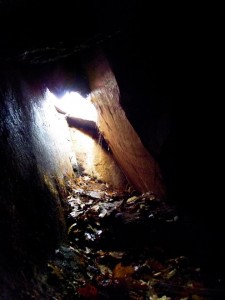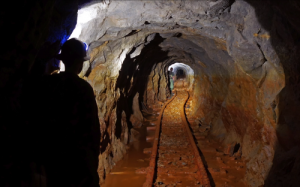 Recently we teamed up with members from the group known as Iron Miners. Like us they hunt down remarkable history and fantastic locations long forgotten in New England. What makes them unique, is that they pursue stories connected to mines lost in the forests across the northeast. Some of these tales are connected to important moments in the early history of America. We had such a great time working with them on the Lost cave of Monroe, we already have plans to team up with them on some fascinating projects in 2018.
Recently we teamed up with members from the group known as Iron Miners. Like us they hunt down remarkable history and fantastic locations long forgotten in New England. What makes them unique, is that they pursue stories connected to mines lost in the forests across the northeast. Some of these tales are connected to important moments in the early history of America. We had such a great time working with them on the Lost cave of Monroe, we already have plans to team up with them on some fascinating projects in 2018.
Over the years of hunting down mines, they have captured many of their adventure in short documentaries. We thought many of you would find them as interesting as we did, so we’ll be posting them on our blog. Later this year we’ll be posting new videos on the amazing stories we’re working on with them right now.
Posted in Archaeological, Cave, Geological, Historical, Subterranean and tagged connecticut, history, legend, mine, new england by Michael with 3 comments.

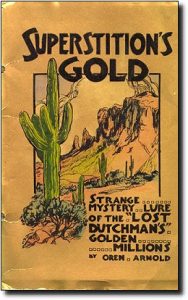 Stories of lost gold mines have always been popular among prospectors and treasure hunters. It is often believed that an undiscovered motherlode is just waiting for some treasure hunter to find it using modern technology. Lost mines often recall tales like that of Lost Dutchman’s Mine, coded maps and the wild west. New England is the last place anyone would expect find a gold mine. But surprisingly the northeastern states did have a short-lived boom in prospecting and gold mining. So far, over 20 lost and forgotten gold mines have been found in New England (excluding all the places known for placer gold).
Stories of lost gold mines have always been popular among prospectors and treasure hunters. It is often believed that an undiscovered motherlode is just waiting for some treasure hunter to find it using modern technology. Lost mines often recall tales like that of Lost Dutchman’s Mine, coded maps and the wild west. New England is the last place anyone would expect find a gold mine. But surprisingly the northeastern states did have a short-lived boom in prospecting and gold mining. So far, over 20 lost and forgotten gold mines have been found in New England (excluding all the places known for placer gold).
With the stratospheric price of gold and popularity of the reality television show, Gold Rush, the interest in gold prospecting in New England has skyrocketed. Forgotten mines and minor gold rushes in the northeast are a terrific topic to explore. Since there are so many mines and location to discuss, they can’t all fit in one article. So, over the next year, look for a series of articles, each one spotlighting one of the six New England states, beginning with in Rhode Island. This southern New England state is known for its history, beaches, and food –not gold mines. Surprisingly the biggest little state still keeps a few secrets in the form of prospects and mines.
Posted in Geological, Historical, Subterranean by Michael with 16 comments.
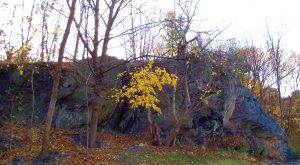 I’m often asked how we uncover these interesting places and history in New England. Often, I will stress the worth of libraries and lots of reading, but forget to mention the immense value of just talking to people. Many of our greatest discoveries come from a conversation with a friendly person we meet in our travels.
I’m often asked how we uncover these interesting places and history in New England. Often, I will stress the worth of libraries and lots of reading, but forget to mention the immense value of just talking to people. Many of our greatest discoveries come from a conversation with a friendly person we meet in our travels.
In fall of 2012, I was once again reminded that chatting with friends and family around you can also pay off. I was told that my father in-law Richard Gallo had a story about a long-forgotten cave in Cranston Rhode Island. Though I found it hard to believe I could have missed something like this, I was intrigued.
When I met with Richard, I immediately asked where the cave was located. Expecting to hear that it lay on a lonely hill in the western extremes of Cranston, I was surprised by what in his story revealed.
Posted in Cave, Geological, Historical, Subterranean and tagged Cave, cranston, deadman, kids, mine, pirate, ri, rite by Michael with no comments yet.
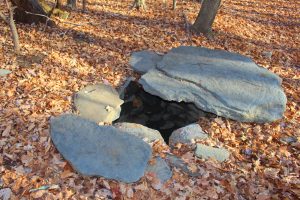 Clay Perry included many things in his books that would only be considered caves by the most generous definition. There were also some entries he referred to as artificial caves. These were man-made stone tunnels and chambers that can be found scattered across New England. Though he had and entire chapter that covered some that he found most interesting, there is one in Goshen, Massachusetts that will only be found in the index as a counterfeiter’s cave.
Clay Perry included many things in his books that would only be considered caves by the most generous definition. There were also some entries he referred to as artificial caves. These were man-made stone tunnels and chambers that can be found scattered across New England. Though he had and entire chapter that covered some that he found most interesting, there is one in Goshen, Massachusetts that will only be found in the index as a counterfeiter’s cave.
In late 2015, I had the chance to visit and explore this counterfeiter’s cave with My friends Jim, Michael , Tristen and Zack. I had known of the tunnel for over 25 years and had always wanted to explore it. I found the available descriptions and illustrations to be accurate. The tunnels branching off in two directions did appear odd, but the corbel construction is something I have seen in other colonial tunnels in New England. Their appearance greatly resembles old Roman culverts that can still be found in England. If it weren’t for the hardpan in which they are seated, I might suspect they were to divert or transport water over a property.
Posted in Archaeological, Cave, Historical, Subterranean by Michael with 4 comments.
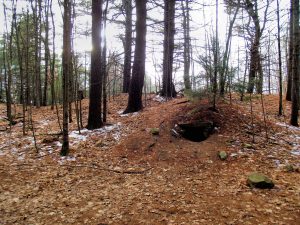
All over New England are stone chambers of all different shapes and sizes. Clay Perry referred to them as artificial caves, and dedicated a chapter to some he speculated were created by Irish monks around 1000 AD.
In New England there is one known as the Hermit Cave. It is a corbelled dome chamber built into a low natural mound. It has a small crawl-in opening two feet high and wide with a three-foot-long passage. The passage slopes slightly to an oval chamber 6 feet, 8 inches high and 7 feet, 6 inches wide. The rear of the chamber to the entrance measures 11 feet, 6 inches long. This small chamber is an amazing work of dry masonry.
Posted in Archaeological, Historical, Ruins, Subterranean by Michael with 2 comments.
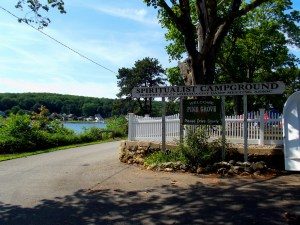 I’ve often thought of Connecticut as the Devil’s State. You can find his name attached to more features, places and landmarks than anywhere else in New England. Even Long Island Sound was referred to as the Devil’s Belt. Because of this, I was not surprised to stumble on the mention of a cave called “The Devil’s Cave,” in Connecticut. I had seen it mentioned in a 1908 article about a spiritualist camp that lies near a cove along the coast. I won’t deny that the cave’s name is what caught my interest.
I’ve often thought of Connecticut as the Devil’s State. You can find his name attached to more features, places and landmarks than anywhere else in New England. Even Long Island Sound was referred to as the Devil’s Belt. Because of this, I was not surprised to stumble on the mention of a cave called “The Devil’s Cave,” in Connecticut. I had seen it mentioned in a 1908 article about a spiritualist camp that lies near a cove along the coast. I won’t deny that the cave’s name is what caught my interest.
It wasn’t long before I discovered that this cave has been in many publications in my library. It’s mentioned in a list of lost Connecticut caves as Devil’s Den Caves. Many other authors briefly mentioned it as Indian Cave. The one thing they all seemed to all have in common was the lack of knowledge about its exact location. Some spoke of it as if it were a secret that only locals were aware of.
Posted in Cave, Historical, Subterranean by Michael with no comments yet.

 In Cumbria, England, is Eden Valley, a quiet part of the UK with its traditional towns and pubs, beautiful hamlets and sandstone villages, some dating back to Viking times. A few miles north of the historic town of Penrith, is a small village called Little Salkeld. On the west side of the village is the Eden River. It was known to the Romans as the Itoun. This name derives from the Celtic word ituna, meaning water, or rushing. It winds its way north toward Carlisle.
In Cumbria, England, is Eden Valley, a quiet part of the UK with its traditional towns and pubs, beautiful hamlets and sandstone villages, some dating back to Viking times. A few miles north of the historic town of Penrith, is a small village called Little Salkeld. On the west side of the village is the Eden River. It was known to the Romans as the Itoun. This name derives from the Celtic word ituna, meaning water, or rushing. It winds its way north toward Carlisle.
The largest house in the village is the manor in Little Salkeld, confirmed by King Edward I. It is said to be the original home of the Salkeld family of landowners and Salkeld Hall built in the 16th century. The village has a vicarage with no church and Little Salkeld Watermill that was built in 1745 and is still operating. Little Salkeld is also known for Long Meg and Her Daughters, a Bronze Age stone circle consisting of 51 stones (of which 27 remain upright). The tallest stone is 3.7 meters high and stands outside the circle. It is made of local red sandstone, carved with a spiral, a cup and ring mark, and concentric circles. Poet William Wordsworth deemed them to be the country’s most notable relics after Stonehenge.
Posted in Cave, Geological, Historical, Subterranean by Tony T with no comments yet.
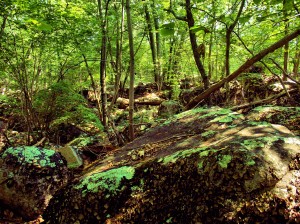 In Rhode Island there is a rocky hill known as Queen’s Fort. It was an Indian fort that was occupied by Narragansett Indians that survived the battle in the Great Swamp, and chose not to leave RI. It lives on a hill covered with glacial erratics. With that natural feature alone, this was a fantastic place for a fort. Somewhere hidden in this rugged landscape is a cave know as Queen Quaiapens Chamber.
In Rhode Island there is a rocky hill known as Queen’s Fort. It was an Indian fort that was occupied by Narragansett Indians that survived the battle in the Great Swamp, and chose not to leave RI. It lives on a hill covered with glacial erratics. With that natural feature alone, this was a fantastic place for a fort. Somewhere hidden in this rugged landscape is a cave know as Queen Quaiapens Chamber.
Posted in Archaeological, Cave, Geological, Historical, Ruins, Subterranean by Michael with 4 comments.
 Penny Dreadful and I went out to find Leete’s Caves. We had previously tried few Saturdays ago. We were using direction and maps from a 1963 Yale publication, but due to development in the area the old access point was now private property. Fortunately we had already prepared for this and had plotted an alternate way to access the area. Unfortunately this required a longer hike through unbeaten forest, and crossing over a series of ridges. The incredible amount of large downed trees littering the forest made our hike to the caves like an obstacle course.
Penny Dreadful and I went out to find Leete’s Caves. We had previously tried few Saturdays ago. We were using direction and maps from a 1963 Yale publication, but due to development in the area the old access point was now private property. Fortunately we had already prepared for this and had plotted an alternate way to access the area. Unfortunately this required a longer hike through unbeaten forest, and crossing over a series of ridges. The incredible amount of large downed trees littering the forest made our hike to the caves like an obstacle course.
Posted in Cave, Geological, Subterranean by Michael with no comments yet.
 Almost a year ago we had found the counterfeiters den that had been lost for close to 100 years. We promised that we would share the full story behind the Den once our research was complete. Though the story is still not complete and there is much more research to be done, we felt we would share how much we have so far. We have withheld names and particular details of the story because we are currently working with members of the local government to protect it. We confirmed that the den is on private property and we are trying to arrange a conservation easement. For now, the den should be considered off limits. Soon we hope to meet with the land owners to begin discussions. We hope to develop a good relationship with them so that the den can be protected and possibly accessible in the future.
Almost a year ago we had found the counterfeiters den that had been lost for close to 100 years. We promised that we would share the full story behind the Den once our research was complete. Though the story is still not complete and there is much more research to be done, we felt we would share how much we have so far. We have withheld names and particular details of the story because we are currently working with members of the local government to protect it. We confirmed that the den is on private property and we are trying to arrange a conservation easement. For now, the den should be considered off limits. Soon we hope to meet with the land owners to begin discussions. We hope to develop a good relationship with them so that the den can be protected and possibly accessible in the future.
The History of “The Lost Counterfeiters Den”
In the fall of 2012, Ms Dreadful and I decided to turn our attention back to our long-term project of hunting down seldom-visited or long-forgotten caves in New England. We had accumulated a long list of caves by digging through our library of historic books and documents, and many visits to the local historical archives. This year we read about a cave that we had seen mentioned in the past. We had been involved in another project and neglected to make note of it. To avoid repeating the same mistake, we thought now was the best time to act.
At a rocky ridge on the south side of a ravine, deep in the forests of the New England, a band of counterfeiters were forging coins. Tradition says that at this same location there was a small cave they used to hide their tools and money. The cave was known by locals as Counterfeiters’ Den, and the last time it had been visited was the early 1920s. This cave was entered from above through a triangular opening that could be hidden by a rock slab that fit the opening. With little effort, it could be so well concealed in the forest landscape that only the men of this unscrupulous enterprise would ever be aware of its existence.
Posted in Cave, Geological, Historical, Subterranean by Michael with 27 comments.







